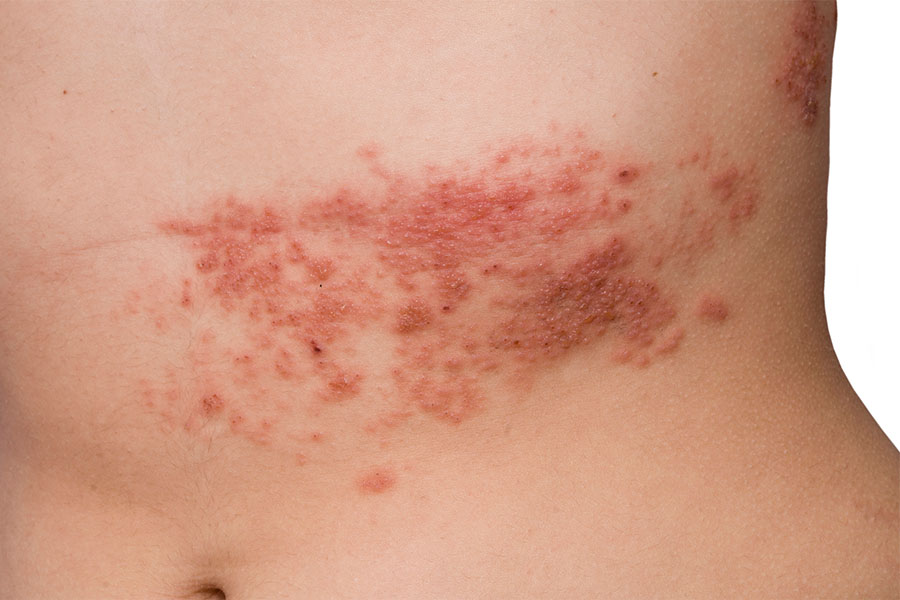
Shingles Treatment – Advanced Care for Pain Relief and Skin Healing
Understanding Shingles
Shingles begins with tingling, itching, or burning sensations in a localized area of the skin. Within a few days, a red rash develops, followed by fluid-filled blisters. Other symptoms may include fever, fatigue, and sensitivity to touch. The condition can last 2 to 4 weeks, and in some cases, nerve pain (postherpetic neuralgia) can persist even after the rash heals.
Common signs of shingles include:
Painful rash on one side of the body or face
Red, fluid-filled blisters that crust over in 7–10 days
Itching, tingling, or burning sensations
Fever, headache, or fatigue
Sensitivity to light and touch in the affected area
Early diagnosis and treatment are essential to minimize discomfort and reduce the risk of complications, such as postherpetic neuralgia, eye involvement, or bacterial infection of the blisters.
Causes and Risk Factors
Shingles occurs due to the reactivation of the varicella-zoster virus that remains dormant in nerve tissues after a previous chickenpox infection. Certain factors can trigger its reactivation, including:
Weakened immune system due to age, stress, or illness
Chronic medical conditions such as diabetes or autoimmune disorders
Physical or emotional stress
Certain medications that suppress immunity
Although shingles is not as contagious as chickenpox, the virus can spread to individuals who have never had chickenpox or the vaccine, causing them to develop chickenpox.
Comprehensive Shingles Treatment
At our clinic, we offer personalized shingles treatment to reduce pain, accelerate healing, and prevent long-term complications. Treatment is tailored based on the severity of the infection, location of the rash, and patient’s overall health.
1. Antiviral Therapy
Prescription antiviral medications, such as acyclovir, valacyclovir, or famciclovir, help reduce the severity and duration of shingles when started early. They work by slowing the virus’s replication and preventing further damage to the nerves and skin.
Benefits:
Shortens the duration of the outbreak
Reduces the severity of symptoms
Minimizes risk of postherpetic neuralgia
2. Pain Management
Shingles can cause significant nerve pain. Our clinic offers targeted pain relief options, including:
Oral painkillers for mild to moderate pain
Nerve pain medications for postherpetic neuralgia
Topical creams and ointments to soothe itching and irritation
3. Anti-inflammatory and Healing Support
Anti-inflammatory medications may be prescribed to reduce swelling, redness, and discomfort. Additionally, medicated creams and dressings help keep blisters clean, prevent secondary infections, and accelerate skin healing.
4. Eye Involvement Care
Shingles can affect the eyes (ophthalmic shingles), potentially leading to vision complications. Our dermatologists work closely with ophthalmologists to monitor and manage ocular involvement, ensuring timely and safe treatment.
5. Post-Shingles Care
Even after the rash heals, some patients experience lingering nerve pain or skin sensitivity. Our clinic provides:
Ongoing nerve pain management
Skin care guidance to restore texture and prevent scarring
Preventive advice for future outbreaks
Why Choose Our Clinic for Shingles Treatment?
Expert Dermatologists: Our team is skilled in diagnosing and managing shingles and its complications.
Advanced Treatment Options: We use modern antiviral therapies, pain management, and aesthetic dermatology techniques to ensure fast and safe recovery.
Personalized Care: Each treatment plan is tailored to the patient’s age, health, and severity of shingles.
Comprehensive Follow-up: We monitor healing progress and provide ongoing support to prevent recurrence and manage postherpetic neuralgia.
Safe and Hygienic Environment: All procedures are conducted under strict clinical standards to maintain patient safety and comfort.
Preventive Measures
Preventing shingles is as important as treating it. Our dermatologists recommend:
Vaccination: The shingles vaccine is highly effective in reducing the risk of outbreaks, especially for adults over 50.
Healthy Lifestyle: Maintaining immunity through a balanced diet, regular exercise, and stress management can lower the likelihood of reactivation.
Early Intervention: Recognizing early symptoms and seeking immediate medical care helps control the infection and reduce complications.
Post-Treatment Care and Recovery
Proper care after shingles treatment is essential for fast recovery and healthy skin restoration:
Keep the affected area clean and dry
Avoid scratching or picking at blisters
Use prescribed ointments or creams as directed
Wear loose clothing to prevent irritation
Follow up with your dermatologist to manage any lingering nerve pain
With proper treatment and care, shingles can be effectively managed, allowing patients to regain comfort, confidence, and healthy skin.
